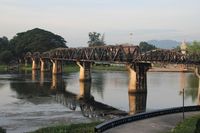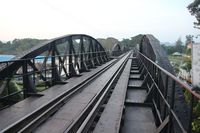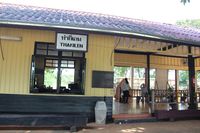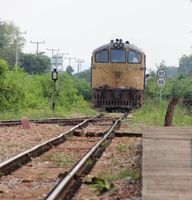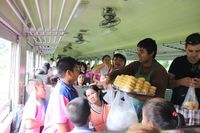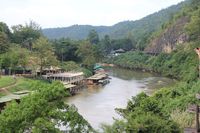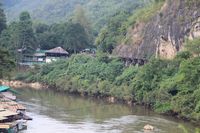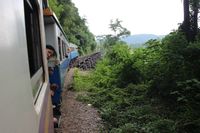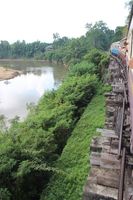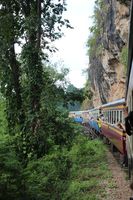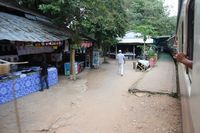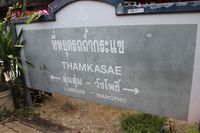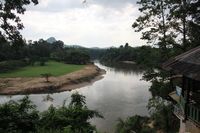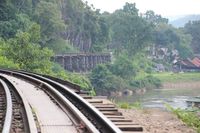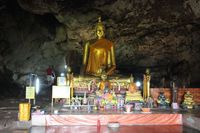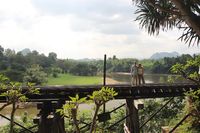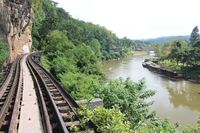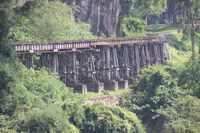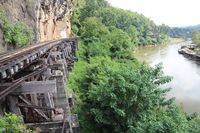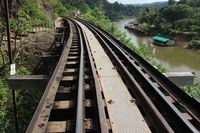The notorious Bridge over the River Kwai was built during the Great Pacific War when Japan declared war on the United States and UK. It took one year to build and was finished in October 1943. To speed up the work the Japanese built a temporary wooden bridge about 100 metres from the present one to transport the materials to build, what has become known as, the Death Railway.
We got on the train at a little station called
Tha Kilen which seemed to be in the middle
of nowhere. There were only tourists on the
platform. Invariably the trains are late,
in our case about 1 hour late. There was
a mad rush to get on the train to get a seat
on the left side and the train was crowded,
with some people having to stand. The carriages
were old with wooden seats with cushions
on them and the windows dropped down into
the frames for a perfect open view. After
travelling through fields and jungle the train followed the river, clinging to
the cliff face at the Wang Pho trestle viaduct.
The train goes around a long curve on the
trestle viaduct so you can hang out the window
to take photos. Just beyond the curve is
Tham Krasae station, where we got off.
Once the train has departed you can walk back along the railway line to Tham Krasae cave which houses several Buddha images and is a popular pilgrimage site for Thai people. We then walked further back along the trestle bridge. There is a marker alongside the railway line that shows where the flood water rose to within feet of the top of the trestle bridge in August 1974. At the station is a restaurant and a small market and a bomb from the war. The river area is beautiful.
|
|
| ||||||||
|
|||||||||
|
|
|










